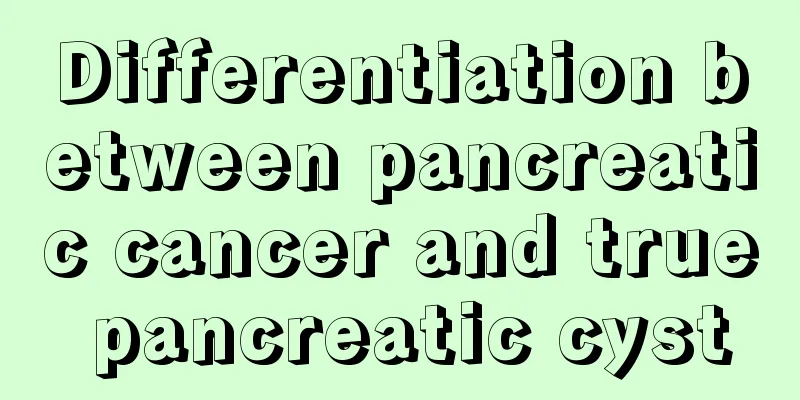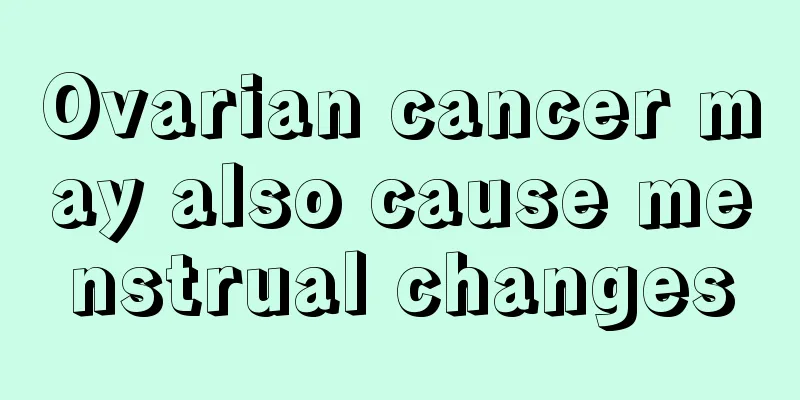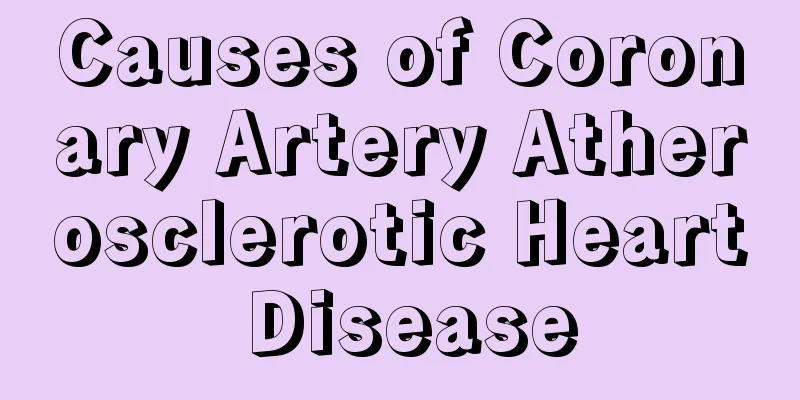Differentiation between pancreatic cancer and true pancreatic cyst

|
For patients, it is crucial to accurately distinguish pancreatic cancer from other diseases. So, how to distinguish the two clinically? Different causes The most common true cyst is the retention cyst, which is mostly caused by extra-pancreatic duct compression, pancreatic duct stones, inflammatory stenosis, etc. It can also be caused by congenital abnormal development of the pancreatic duct, which is also called congenital cyst. The causes of pancreatic cancer are more complicated, and are mostly related to chronic pancreatitis, diabetes, and the patient's high-protein, high-fat, high-calorie diet. In addition, it is also related to the patient's smoking. Symptoms vary Typical symptoms of pancreatic cancer are jaundice and abdominal pain. In addition, other symptoms include weight loss, upper abdominal distension, back pain, fatigue, etc. If the pancreatic true cyst is small, the patient may have no obvious symptoms; if it is large, due to the compression of the cyst, high pressure in the cyst cavity and pancreatic duct, the patient may experience upper abdominal or back pain and digestive system symptoms such as fullness, nausea, vomiting, constipation, abdominal mass, etc. If the cyst ruptures into the abdominal cavity, there will be acute peritonitis; if it ruptures into the digestive tract, it may form an internal fistula, and there will be repeated high fever, abdominal pain, and even upper digestive tract bleeding. Imaging tests Ultrasound examination: patients with pancreatic cancer may have enlarged pancreatic head, irregular pancreatic body, dilated pancreatic duct, enlarged gallbladder, and metastatic lesions in the liver, etc. Patients with true pancreatic cysts may have a liquid dark area with a clear location and range in the upper abdomen. Ultrasound examination: The ultrasound manifestation of true pancreatic cysts is an echo-free area in the pancreas with a capsule, smooth and clear borders, and an echo enhancement effect at the back. Congenital cysts are mostly multiple and often protrude from the surface of the pancreas. Retention cysts are generally single and small in size, often accompanied by compression of the surrounding pancreatic tissue, and have rough echoes. Parasitic cysts have different manifestations depending on the parasite, and can be single-chambered or multi-chambered, with a thick and rough capsule, and subcysts or head segments can be seen in the cysts. Pancreatic head cancer can be seen as enlarged and thickened pancreatic head with irregular shape, low echo in tumor area, blurry and clear boundary between pancreatic tissue on both sides, compression of main pancreatic duct, abdominal aorta and inferior vena cava. If splenic vein is compressed, spleen will be congested and enlarged. When reexamination after drinking water, compression of gastric antrum and gastric angle can be seen, and stomach is pushed forward and shifted upward. |
<<: 3 dietary treatments for lymphoma
>>: What symptoms may children have bladder cancer
Recommend
Hoarseness is a common symptom of advanced laryngeal cancer
Different symptoms of advanced laryngeal cancer m...
4 month old baby has foam in stool
The baby's physical health is the focus of pa...
Transmission routes of syphilis
How is syphilis transmitted? When it comes to syp...
Can lung cancer be detected by blood test? Pay attention to two aspects when treating lung cancer
With the continuous advancement of medical techno...
How to prevent and treat recurrence of lymphoma after surgery
Lymphoma is a malignant tumor that occurs in the ...
Will urine turn yellow in early pregnancy?
Once a woman becomes pregnant, it means she is st...
Can hypertension be completely cured? Three methods are effective
At present, hypertension is the main factor affec...
Why is my waist sore?
After a tiring day, many people will experience b...
Nursing principles for patients with melanoma
Melanoma is a very serious disease. Patients shou...
What's the matter with white nails
Nails have been recognized as an indicator of hea...
Can a mole be removed casually?
Everyone has moles to some extent. If the mole is...
How to remove birthmarks on the belly
Who doesn't want flawless skin? However, the ...
Is the water and electricity radiator easy to use
Water-powered electric radiators are our most com...
Benefits of abdominal breathing
Breathing is an important process in our lives. C...
My waist is a little sore, what's going on?
The waist is a very important part of our body. B...









